
It’s finally here! After years of speculation and months of teasing (with a cavalcade of sporting superstars, no less) the Kia Tasman has been officially revealed.
The global unveiling took place at the Jeddah International Motor Show in Saudi Arabia, but Torquecafe was invited to the ute’s spiritual home, Tasmania, to see it in the metal for the Australian debut.
As the first ute (or pickup as they prefer to call it) from the Hyundai-Kia Group, there is understandably a lot of excitement around the new offering.
VIDEO: Kia Tasman shows his strength
“Kia’s first-ever pickup truck was created from the ground up to transform the market and respond to the growing preference for lifestyle-oriented trucks with advanced features,” said Ho Sung Song, president and CEO of Kia.
“The Kia Tasman is a progressive pickup truck that follows its own path – not the competition. The Kia Tasman combines true pickup values with exceptional capability and practicality, and advanced features that defy conventional thinking. This essence is instilled in our global slogan ‘Dive into a New Dimension’, enabling customers to broaden their horizons. It offers world-first solutions for those seeking a lifestyle vehicle for leisure and outdoor activities while meeting the needs of small business operators, such as traders and farmers.”
READ MORE: Can BYD and Kia upset the local dual-cab establishment?
Eye of the Tiger
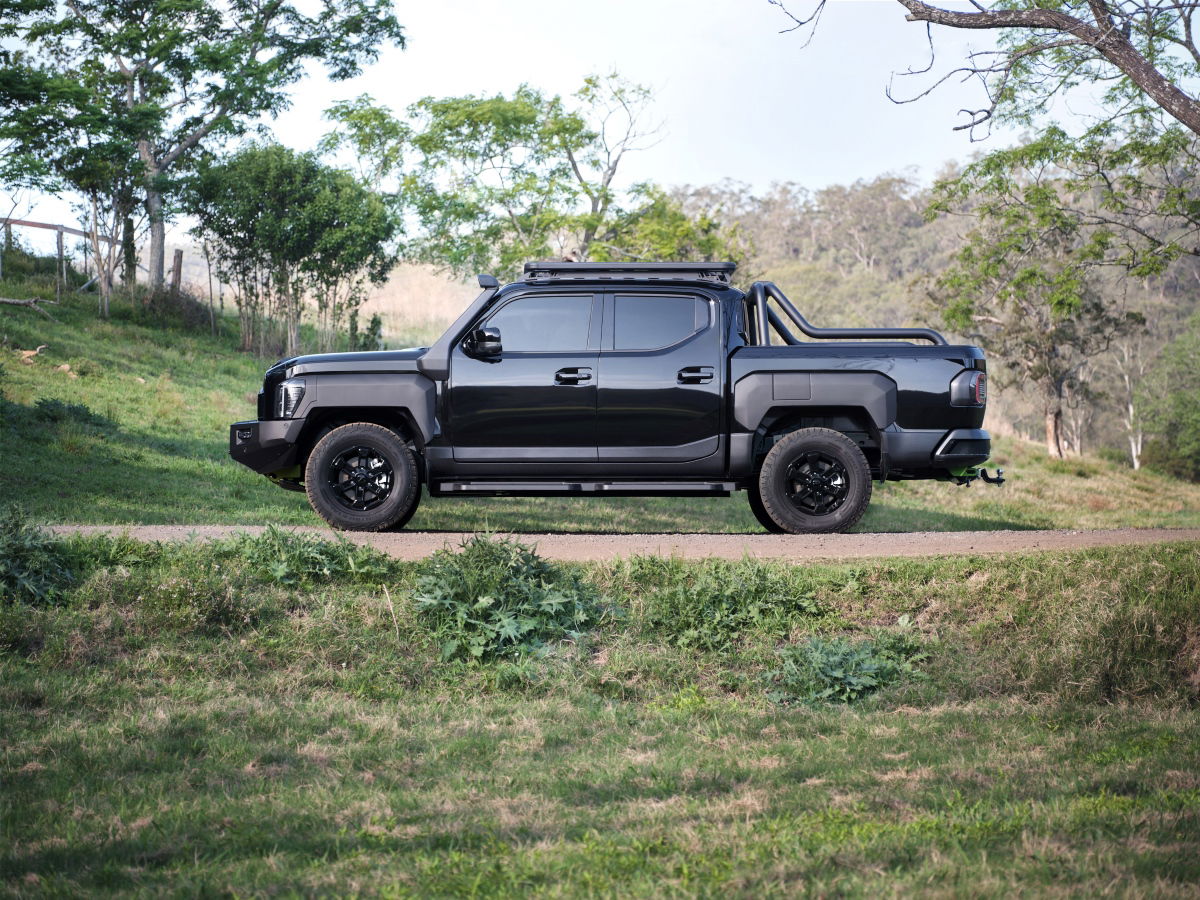
The Tasman has a distinctive look, visually separating itself from its more angular, ‘truck-like’ appearance of the Ford Ranger, Toyota HiLux and Mitsubishi Triton.
It starts with Kia’s trademark ‘Tiger Face’ grille which is flanked by vertical lighting for a unique front look. The wheel arches are prominent at all four corners and feature storage spaces for added practicality.
The cabin is deliberately upright to give the Tasman a “bold silhouette”, while at the rear the tailgate is stamped with a large ‘Kia’ logo.
“Solid and capable, its design begins with an honest form, using simple and rugged elements to capture a spirit of practicality,” explained Kia’s global head of design, Karim Habib. “The Kia Tasman is a pickup truck that effortlessly blends lifestyle and utility, and represents our commitment to always bring bold and innovative ideas to our customers.”
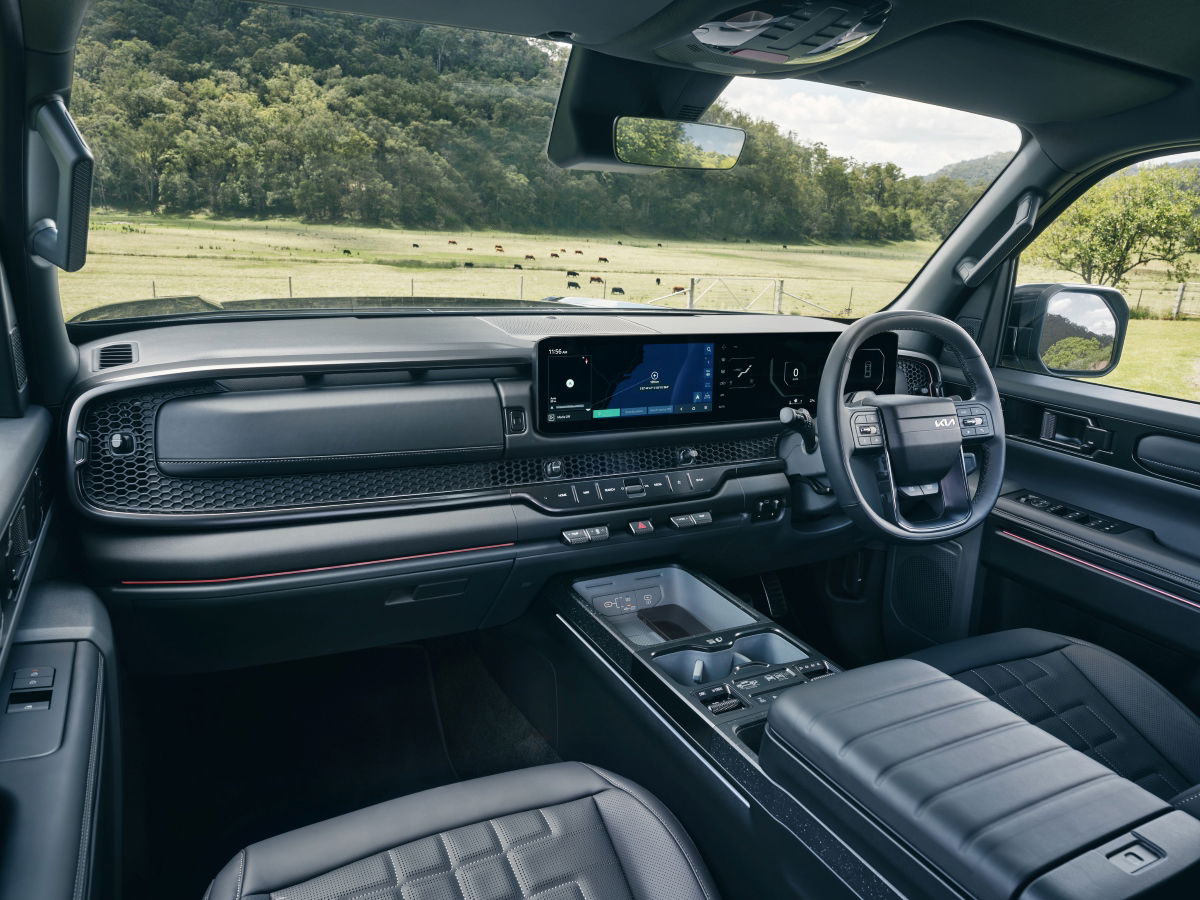
Inside Kia has opted for a more SUV-like cabin, with huge twin 12.3-inch digital screens paired to create a widescreen display for the dashboard and infotainment. An eight-speaker Harmon/Kardon premium sound system is an optional extra.
It’s not all glitz though, with the centre console equipped with a fold-out work table for drivers to use when parked.
Workhorse, not show pony
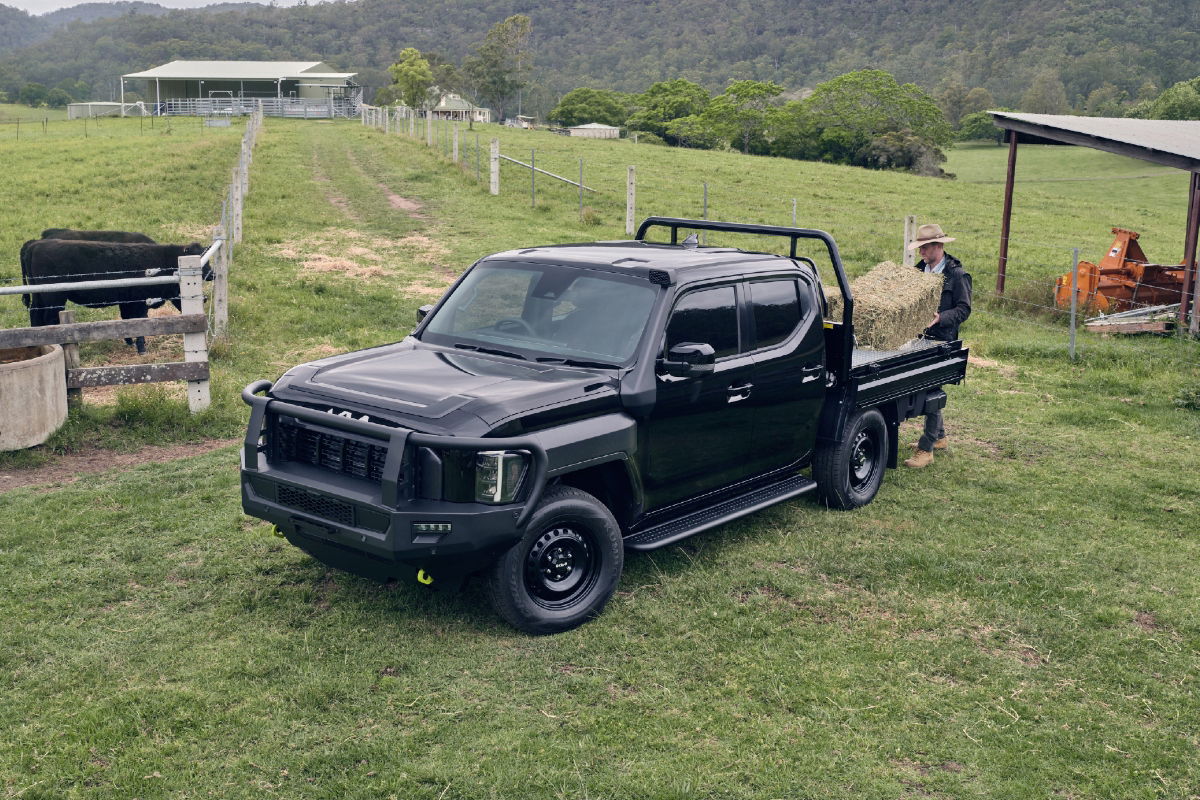
While it may look dramatically different from its rivals, Kia has worked hard to ensure the Tasman is a hard worker.
The tray bed measures 1512mm long, 1572mm wide (with 1186mm between the wheels) and 540mm deep, while having a maximum payload of 1195kg with a 3500kg towing capacity.
You can access the tray from steps built into the corner of the rear bumper, just like the Ranger. And once you get up there you’ll find the tray is illuminated and has a 240V power outlet for tradies to use their tools or other equipment.
A sliding cargo floor is an option too, to help make loading and unloading easier.
Kia Australia was involved with the ride and handling program earlier than any previous model, ensuring it is well-suited to local conditions and benchmarked against the Ranger and HiLux directly.
Torque it up

As expected, the Tasman is powered by Kia’s existing 2.2-litre four-cylinder turbo diesel engine, which is tuned to make 156kW of power and 441Nm of torque in this application. It’s paired to an eight-speed automatic and all-wheel drive.
Internationally it will also be available with a 2.5-litre petrol engine and the option of a six-speed manual gearbox, but Kia Australia has opted against them due to the preferences of the local market.
Plenty of choice
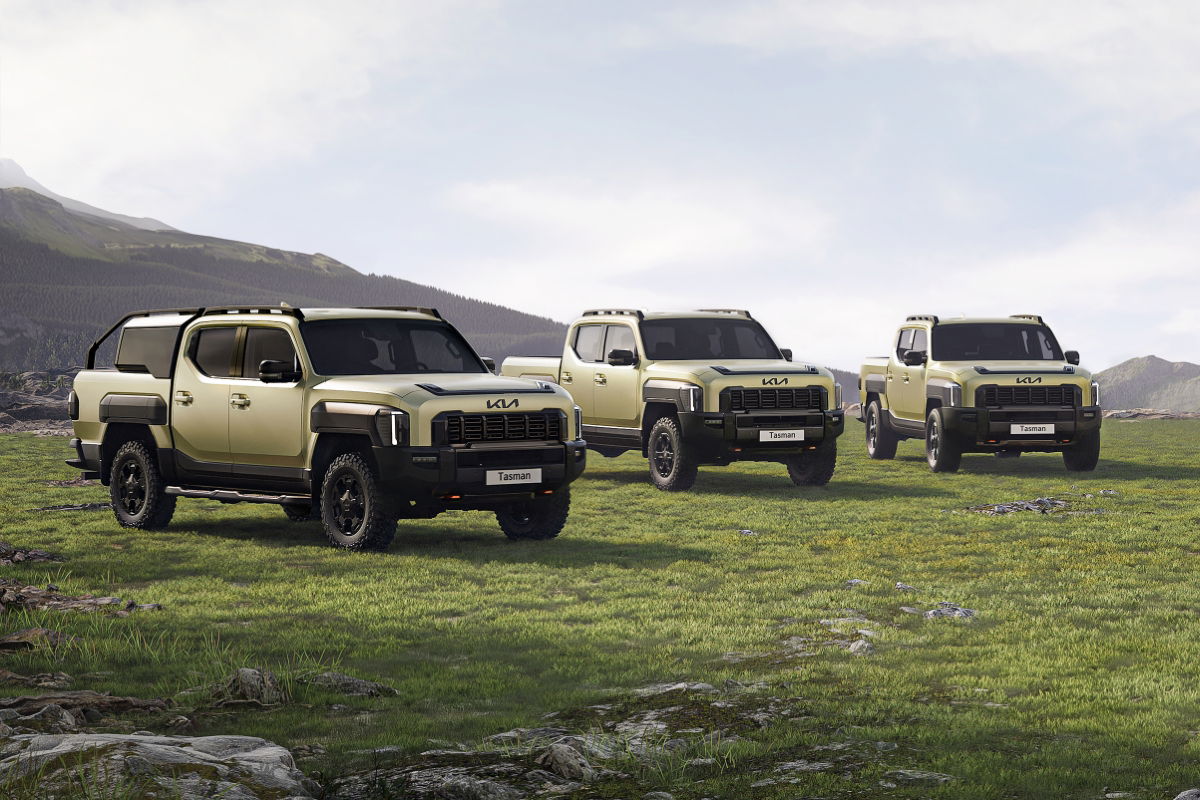
The initial launch line-up for the Tasman features three model variants – Baseline, X-Line and X-Pro – as a Dual Cab, while there is a Cab Chassis option for those who want something more flexible.
Full details of the line-up, including pricing and specifications for Australian-bound Tasman won’t be confirmed until closer to its launch, which is due midway through 2025.



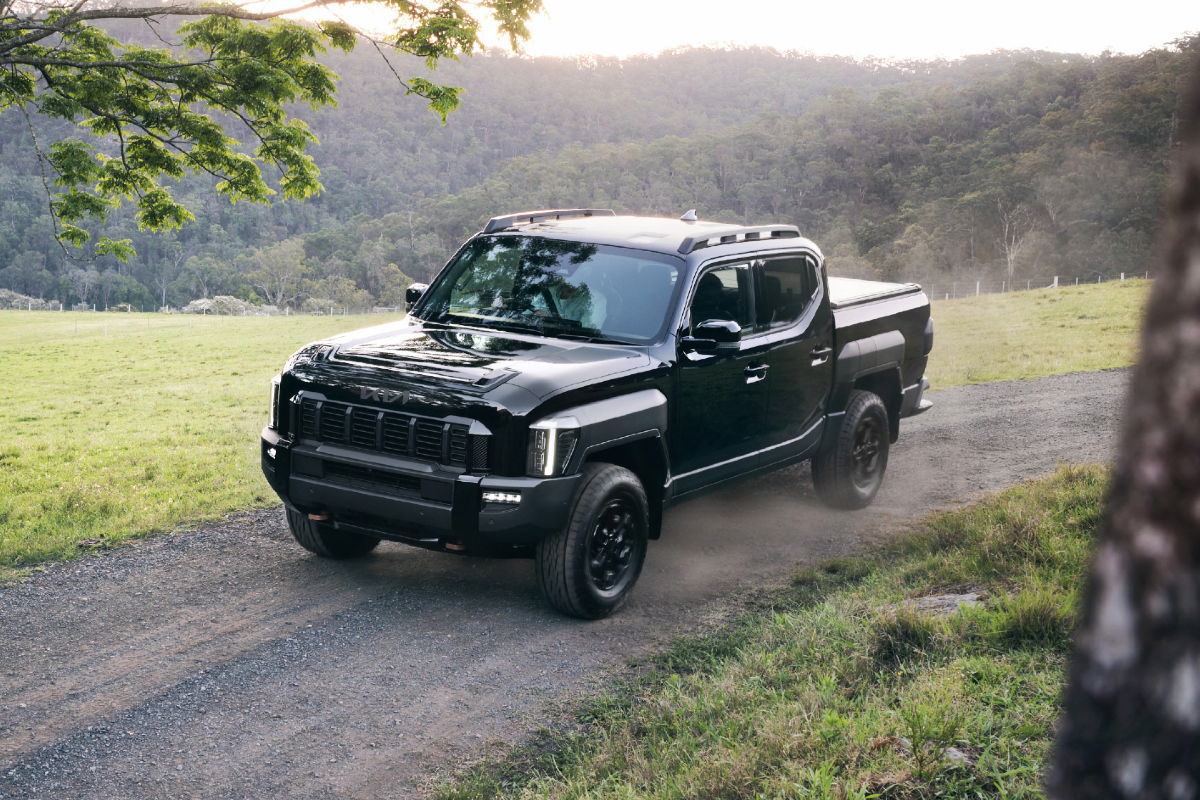









Discussion about this post